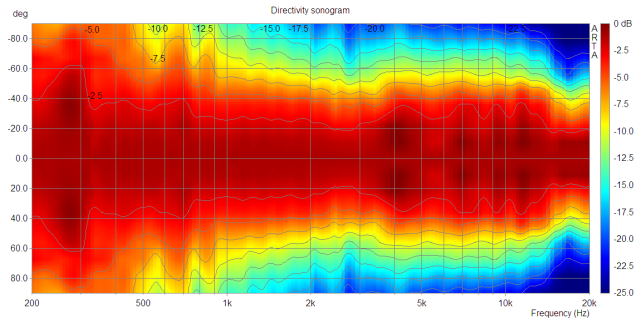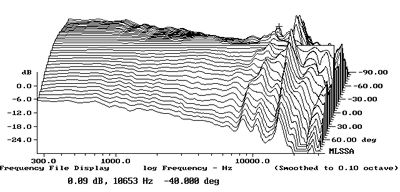I was mainly discussing first reflections, which cause a huge dip in response when freguency/wavelength and delay make cancelaltion. We must remember to consider also the back wall behind the listener! These are most difficult around 100-400Hz.
Transition zone 200-700Hz is difficult to analyze. In in-room measurements we see many many first reflection nulls with short gating and also many other wiggles that may come from speaker's edges/directivity problems. Also multiple order boundary reflections are mixing together, with long gating or RTA. I use to overlay multiple measurements from different mic locations or longperiod averaged RTA with mic in my waving hand (MMM)
I want to believe that highish horizontal directivity from 200Hz up is for good and also not too difficult to achieve. A 15" cone+horn crossed around 900Hz can do that, also most cardioids and dipoles.
My copy of Gradient 1.3 speakers has monopole bass crossing to dipole mid around 180Hz LR2 and horizontal directivity is cardioid 120-250Hz, dipole above it. I have done hundreds of measurement both in- and outdoors and this is the nicest looking horizontal 360¤ sonogram, outdoor 12ms gating, other normalized. Room response with 500ms gating shown too, my room is quite wide. This sounds nice, if I lift 100-300Hz higher it starts to sound boomy. Bass is sealed downfire with dsp, -6dB is around 12Hz in room response!
My build thread at diyadio.com
https://www.diyaudio.com/forums/mul...aborative-speaker-project-48.html#post4231049







